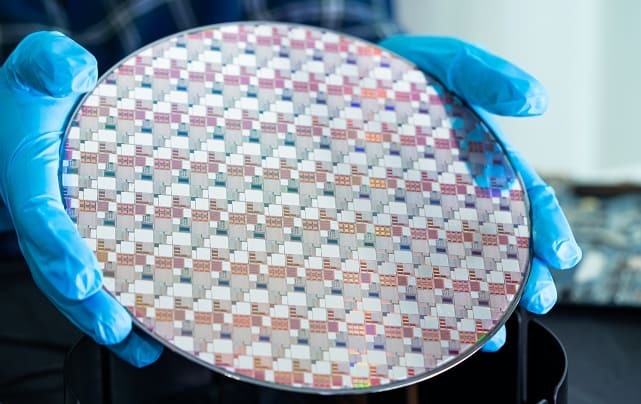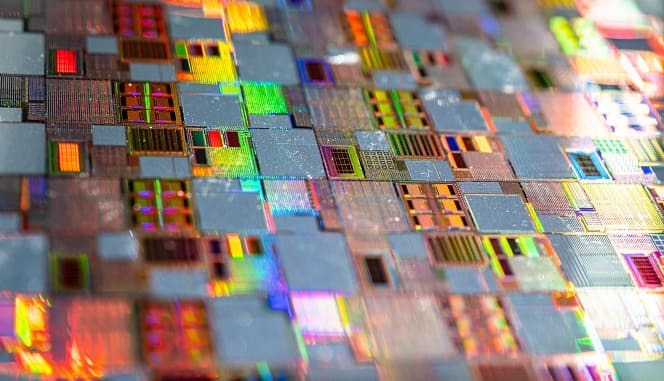
 Data Structure
Data Structure Networking
Networking RDBMS
RDBMS Operating System
Operating System Java
Java MS Excel
MS Excel iOS
iOS HTML
HTML CSS
CSS Android
Android Python
Python C Programming
C Programming C++
C++ C#
C# MongoDB
MongoDB MySQL
MySQL Javascript
Javascript PHP
PHP
- Selected Reading
- UPSC IAS Exams Notes
- Developer's Best Practices
- Questions and Answers
- Effective Resume Writing
- HR Interview Questions
- Computer Glossary
- Who is Who
What is the full form of IC?
Introduction
bIntegrated Circuit (IC) is also known as a chip, IC or microchip. It is made up of a semiconductor chip and has numerous transistors, capacitors, and diodes in it.

A semiconductor is typically made up of silicon. IC is the building base for electronics and can function as an amplifier, microprocessor and logic gate. ICs are capable of doing many simple functions to complex ones.
Types of ICs
Broadly, there are three types of ICs i.e. analogue, integrated and mixed ICs. But there are others also such as radiofrequency and sensor ICs.
Analog vs digital integrated circuits
Analog IC |
Digital IC |
|---|---|
It is also known as a linear circuit and it is the simplest type of circuit. It has variable outputs. |
It is designed to accept voltages of specific values. |
It sends continuous signals such as sound, temperature and voltage |
It sends discrete signals such as binary data |
It uses components like transistors, resistors and capacitors |
It uses components like logic gates and registers |
These are more accurate due to the signal's continuous nature. |
These are less accurate as it loses signals due to the discrete nature of signals |
These are susceptible to the noise |
These are less susceptible to noise |
Mixed vs power integrated circuits
Mixed IC |
Power |
|---|---|
It combines the processing capabilities of both analogue and digital IC |
It controls power in electronic systems. |
t requires a low noise supply of power |
It requires a high current and low voltage supply of power |
It is used in communication electronics and systems |
It can be used in battery charging |
Radiofrequency vs sensor IC
Radiofrequency IC |
Sensor IC |
|---|---|
It operates at a very high frequency |
It can detect physical quantities such as magnetic fields, temperature and acceleration |
It is used in wireless communications such as Bluetooth |
It is operated in industrial and medical environments |
The fabrication process of ICs
The fabrication process of IC is very complex and has many steps
Preparation of wafer Wafer is made up of silicon and the wafer is also cleaned to remove the impurities from it. It is done so to avoid problems during the manufacturing process.
Photolithography The surface of the wafer is covered with a layer of photoresist to ultraviolet light. It creates a pattern to define the location of different components on the chip
Etching The wafer is etched using a chemical solution after the photoresist is developed. The etching is done with a chemical solution. The etching process makes a pattern of raised features after removing unprotected areas of the wafer. The raised features will become components of the integrated circuit.
Doping To create specific electrical properties, the silicon wafer is introduced with impurities. It will alter the conductivity of silicon

Oxidation A thin layer of oxide is grown on the surface of the water so that it can act as an insulating layer between different components of integrated circuits.
Deposition of metal On top of the oxide layer, a layer of metal is deposited to interconnect various components of the integrated circuit.
Chemical mechanical polishing Excess metal and oxides from the surface of the wafer are removed by the process of CMP, leaving a smooth surface.
Electrical testing Lastly, the integrated circuit is tested to ensure it is functioning properly.
Advantages of ICs
ICs can be used in many electronics. For example, it can be used in a calculator and a supercomputer also.
ICs can be produced in bulk and therefore are cheap.
ICs consume less power as they use small transistors.
ICs can perform complex functions accurately and quickly.
ICs are not hampered by environmental factors such as temperature. Thus, it is considered to be reliable.
It is very tiny in size which makes it ideal for portable products like phones and laptops.
Conclusion
Integrated circuits have revolutionised electronics. The development of ICs has led to the miniaturisation of electronics. It has helped to make the devices lighter, smaller and more compact. The development of ICs has improved the technology of computers. The future of ICs looks more revolutionary if more research and development are done on it.
FAQs
Q1. What is an integrated circuit? What are its advantages?
Ans: IC is a mini circuit made up of many resistors, transistors and capacitors on a semiconductor. Its advantages are high reliability, small size and less power consumption.
Q2. How many types of integrated circuits are there?
Ans: There are three main types of ICs. These are analogue integrated circuits, digital integrated circuits and mixed integrated circuits.
Q3. What are some processes involved in making integrated circuits?
Ans: Some of the processes involved are photolithography and etching, and then multiple layers are added to it. Lastly, it is tested to check its functionality.

